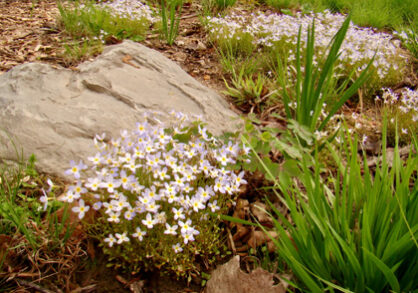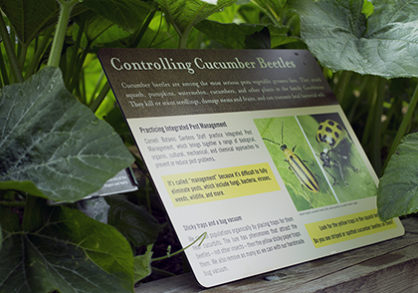Lawns can be lovely and sustainable at the same time. Planting hardy native grasses reduces the need for synthetic fertilizers, water, and mowing. Cornell Botanic Gardens converted a non-native grass (and weed) lawn to a low-maintenance, low-energy input, and high-biodiversity, sustainable native lawn. See how we did it and get ideas for your lawn in this 45-minute video.
Native Lawn Plant list:
Forbs
Penstemon hirsutus (hairy beard– tongue), sun
Aquilegia Canadensis (columbine), sun/shade
Opuntia species (prickly pear), sun
Phlox subulata (creeping phlox), sun
Antennaria plantaginafolia (pussy toes), sun
Tiarella cordifolia (foam flower), shade
Geranium maculatum (wild geranium), part shade
Anemone virginiana (anemone), part sun
Carex species, (sedge), sun/shade, wet/dry
Sisyrynchium angustifolium (blue-eyed grass), sun/shade, wet/dry
Iris versicolor (blue flag iris), sun wet
Mitella diphylla (miterwort), shade
Hedyotis caerulea (bluets), moist, sun
Grasses
Danthonia spicata (poverty oat grass), sun
D. compressa (poverty oat grass), sun
Elymus hystrix (wild rye), sun/shade, moist
Bromus altissimus (broome grass), sun/shade, moist
Agrostis hyemalis (tickle grass), sun, moist
Poa alsodes (grove blue grass), shade
Read more about the Native Lawn here.
Learn More
Native Lawn Demonstration Area
Designed to replace conventional lawn with native low-growing grasses, which only require mowing once or twice per year.
Sustainability at Home
Tips for gardening sustainably and where they are showcased at Cornell Botanic Gardens.
Mundy Wildflower Garden
Here you will find a remarkable variety of plants native to the Cayuga Lake Basin.


